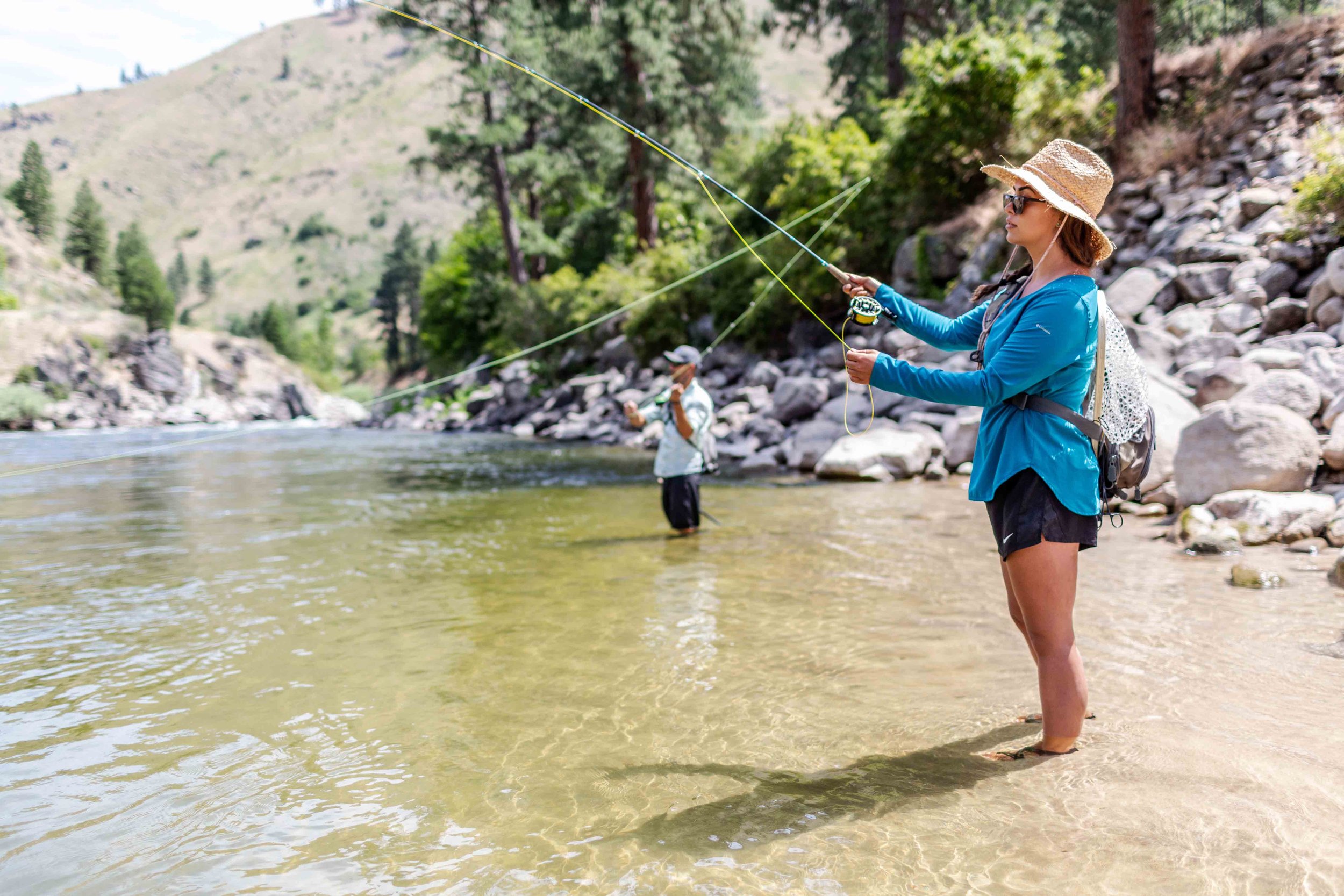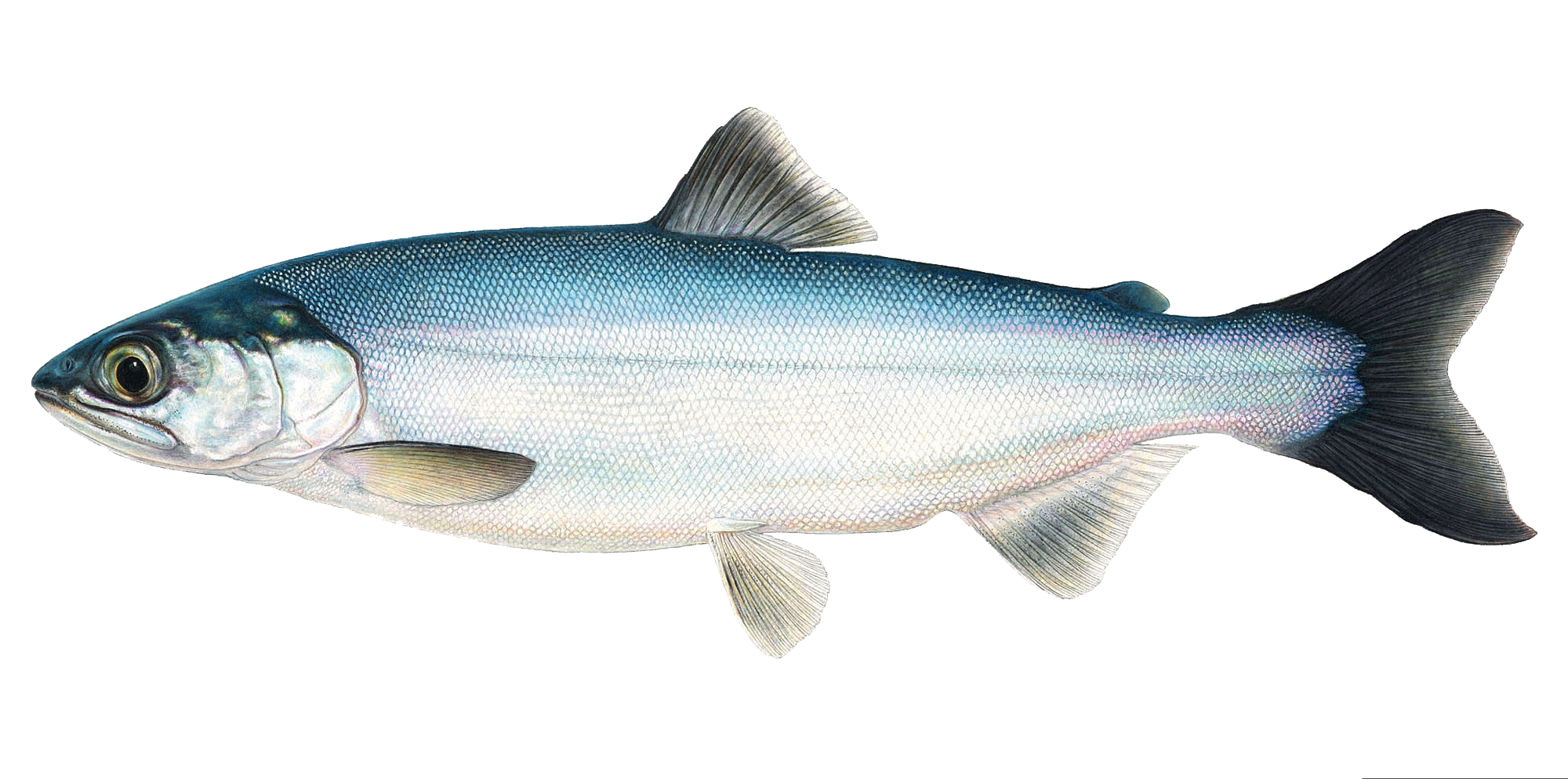
Top 10 fish to catch
Idaho has 42 game fish species and these are the most popular ones to catch.
NATIVE TO IDAHO
Rainbow Trout
Body color can vary depending on their habitat. Their backs can be olive to greenish blue, and their bellies from white to silvery.
Sides may show a red or pink streak.
Irregular spots are found on the back, sides, head, dorsal fin, and tail. Spots are more evenly distributed from head to tail.
The bottom fins can have white tips.
Did you know? Idaho Fish and Game has a cash incentive program in place to help catch rainbows on the South Fork of the Snake. Learn more
NATIVE TO IDAHO
Cutthroat Trout
Red to orange slashes on the underside of the lower jaw.
Body color can vary depending on their habitat and health. Their backs can be steel gray to olive green.
Sides may have yellow-brown with red or pink along the belly.
Spots are more closely grouped toward the tail.
Did you know? Cutthroat trout are Idaho’s state fish! There are three types of cutthroat trout found in Idaho, Yellowstone, West Slope, and Bonneville cutthroat.
INTRODUCED TO IDAHO
Smallmouth Bass
Body color can vary from dark olive to brown on the back, bronze on the sides, and a white belly.
Upper jaw, when closed, does not extend behind the eye, and the eyes may have a reddish tint.
Has vertical bands located on the sides.
Contains nine to 11 spines and 13 to 15 soft rays.
INTRODUCED TO IDAHO
Largemouth Bass
Back and sides of the body are usually green in color.
Belly can range from light green to almost white.
Has a dark, irregular horizontal band along the sides.
Upper jaw, when closed, extends behind the eye.
Contains nine to 11 spines and 12 to 13 soft rays.
INTRODUCED TO IDAHO
Black and White Crappie
Have spines located on the dorsal (top) fin and anal fins.
Heads are greyish to silvery green.
Bodies have lighter sides with silvery-white bellies.
Heavy black spotting or splotches are seen on the body and fins.
Did you know? Crappies like to travel in schools, or large groups, as they search for food.
INTRODUCED TO IDAHO
Yellow Perch
Often dark green on the back with yellow sides.
The sides will have six to eight dark vertical bars.
The front fin has sharp spines and the cheeks have serrated edges.
INTRODUCED TO IDAHO
Brown Trout
Bodies are brown or olive with large black spots.
Sides of the body can vary from light brown to yellowish tones with numerous brown, black and red spots surrounded by halos of blue-gray.
Adipose fin usually has an orange border.
The tail is slightly forked with few, if any, spots.
NATIVE TO IDAHO
Kokanee
Back is greenish blue with faint speckling and few if any spots.
Sides and belly are silvery.
The tail is forked with a large eye and has spots only on the upper half.
During spawning (September - December), bodies become ‘leathery’ and turn dark red to bright scarlet, and heads a dusky green.
Did you know? Kokanee are ‘landlocked’ sockeye salmon that live in lakes and reservoirs instead of the ocean.
NATIVE TO IDAHO
Steelhead
Irregular dark spots on the back, dorsal (back) fin, and tail.
Often dark olive back with silvery-white undersides, and a pink to red stripe running along their sides, with gill cover being reddish in color.
White mouth and white gums.
Square-shaped tail fin.
Did you know? Steelhead are ocean-run (anadromous) rainbows. Juveniles migrate to the ocean and return as adults after 1-3 years to spawn. When they return to fresh water, their color generally changes to darker tones.
NATIVE TO IDAHO
Chinook Salmon
Their body is silvery-blue in color when they first leave the ocean. Once in freshwater, their colors darken to an olive green.
Has irregularly shaped black spots on the back, dorsal fin, and tail. Spots are on the entire tail fin.
The mouth is black with black gum lines and developed teeth.
Adults typically are 24-40 inches in length.
Illustrations ©Joseph R. Tomelleri
Idaho has cod?
Burbot is the only freshwater ling cod species in North America found on the Kootenai River.
Idaho Fish and Game launched an extensive restoration program to reestablish this native species on the Kootenai River. The burbot population was close to being a threatened species, and as of 2019 the population has increased and the fishery has reopened since 2019.
Protecting bull trout.
Bull trout are a threatened species protected by federal law. No harvest is allowed.
Bull trout are native fish to Idaho and can be identified by their yellow spots on the upper body, and red or orange spots on the sides with no blueish halos around spots. Bull trout were listed as a threatened species in 1998 and Idaho Fish and Game has worked hard at protecting this species since 1994.













